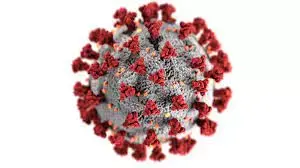It’s weird how Fortune and Bloomberg are much more pessimistic about COVID and long COVID. It’s like bourgeoisie lives matter.
article text
The Business of Death
Aussies, Americans, and Brits — and no doubt people in many other nations — are dying faster than before the pandemic.
Even though Covid waves are becoming less deadly, thanks mostly to increased immune protection from vaccinations and prior infections, the coronavirus remains a significant killer. And stubbornly high all-cause mortality rates indicate that its direct and indirect effects are helping drive a sustained increase in death and disease around the globe.
It’s depressing news, I know.
With death comes bereavement, and there’s been a lot of that since SARS-CoV-2 began spreading widely in late 2019. The number of officially reported Covid fatalities (7.1 million worldwide) doesn’t fully explain the trend in excess deaths. (Neither do Covid vaccines, since body bags were piling up months before the shots were released, and multiple studies show the immunizations protect against severe illness and death).
There’s no silver lining to the tragic loss of life. But if one group sees an upside, it’s those providing funerals, cremations, and burials. Publicly traded companies handling funerals and related services have handed investors an average 79% return since Jan. 1, 2020 — outpacing the 60% gain in the MSCI All Country World Index, one of the broadest measures of the global equity market.
The US highlights the morbid picture. In the two decades before the pandemic, the number of deaths had been climbing at an average clip of almost 1% a year — reflecting population growth and aging, and the devastating opioid epidemic — for a crude rate in 2019 of 869.7 deaths for every 100,000 Americans.
Covid catapulted the rate well beyond 1,000 in 2020 and 2021 before the rate dropped back to just over 984 in 2022. Last year, there were 927.4 deaths per 100,000 people in the US — almost 12% above the 20-year average — for nearly 3.1 million deaths all up.
The coronavirus directly and indirectly contributed to many of them. For instance, a jump in drug overdoses and alcohol use–related diseases during the pandemic likely added to fatalities from unintentional injuries and chronic liver disease in 2023, according to a study this month. Covid also led to more cardiometabolic disease, and age-adjusted mortality rates for diabetes, heart disease, and stroke were above pre-pandemic levels.
Last month, researchers reported similar findings in Australia, where emergency departments have taken longer to hospitalize patients arriving in ambulances — a sign of health-system stress associated with a greater risk of patients dying up to 30 days after their initial medical encounter.
Mortality rates in England have also stayed persistently high since Covid hit, likely reflecting the direct effects of the illness, pressures on the National Health Service, and disruptions to chronic disease detection and management, researchers said in a study in January.
“The greatest numbers of excess deaths in the acute phase of the pandemic were in older adults,” Jonny Pearson-Stuttard and colleagues wrote. “The pattern now is one of persisting excess deaths, which are most prominent in relative terms in middle-aged and younger adults.”
Almost five years into the pandemic, dodging SARS-CoV-2 still remains one of the best ways to avoid adding to the toll — and the frequency of funerals. —Jason Gale


